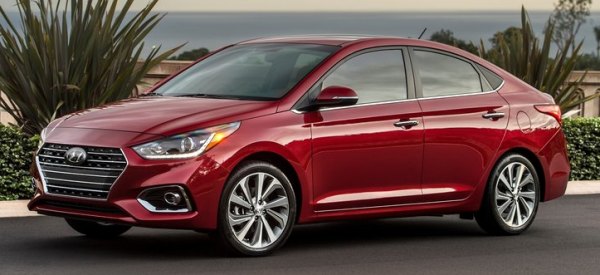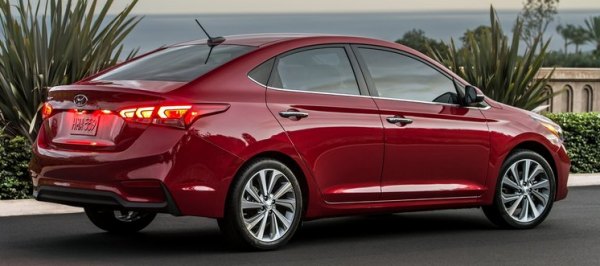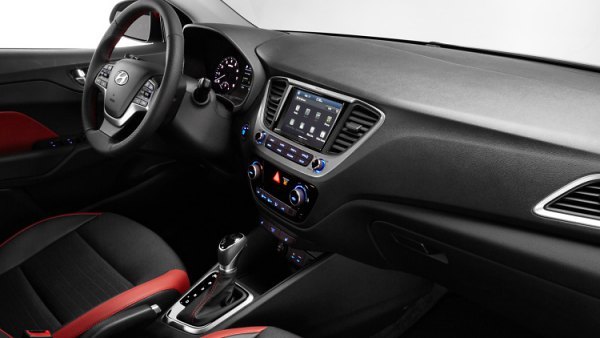Published
on 20
Nov 2017
|
All rights reserved.
|
|
|

|
|
New
Accent has improved on pretty much everything, but it forgot one thing:
heart and soul.
|
|
Hyundai Accent has never
won our admiration. I suppose the new generation Accent will be much
the same. Nowadays there are countless of stylish, high-quality,
refined yet affordable B-segment cars on the market, most notably Ford
Fiesta, Volkswagen Polo and Seat Ibiza. Considering the fast-rising
competitiveness of Hyundai group, its B-segment contender Accent should
have been made to the top of the segment already. Somehow, perhaps the
group is diverting more resources to the strategy of going upmarket,
i.e. Genesis, Stinger, N etc., its cheap cars seemed to be less well
taken care. The result? Look at this Accent and you will know…
While the new Accent appears to be more upmarket with its Audisque
hexagonal grille and a Sonata-like sweeping roof line, it is not
exactly a beautiful design. Few two-and-a-half-box sedans could be
beautiful, and the Accent belongs to the majority. Its rather tall
waistline leaves a large clearance between the C-pillars and rear
wheels, adding a sense of bulkiness even when the largest 17-inch
wheels are fitted. The high and short boot looks neither sporty nor
civilized. Admittedly, it is unfair to compare the proportion between a
sedan and a hatchback. Virtually everything else in the class are
hatchbacks, including the Accent’s sister car, Kia Rio. Why doesn’t it
turn to hatchback? Hyundai said US buyers prefer
sedans. The last generation Accent offered both body styles there, but
three-quarter of buyers opted for the sedan, so there is no reason to
keep hatchback (Another reason I can think of: it leaves that space to
the Rio, which is now hatchback only). There will be a hatchback Accent
sometime later, but its sales will be bouned in Korea, China and not
many
countries. Europe, meanwhile, is satisfied to have i20 instead.

|
|
Few
two-and-a-half-box sedans could be beautiful, and the Accent belongs to
the majority.
|
|
With shrunken market potential, no wonder the Accent sticks with some
old mechanicals. The 1.4-liter 16V MPi and 1.6-liter 16V GDi engines
are carried over. No high-tech three-cylinder turbo like the European
Rio, sorry. The 1.4-liter produces 100 hp and struggles to propel the
slightly heavier body. The 1.6-liter is nicer, but it is no fireball
either. Output is rationalized from the suspicious 140hp to a more
credible 130hp. The official excuse is that the new version is tuned
for more low-to-mid-range torque. Anyway, it is reasonably refined and
the performance is perfectly acceptable for a car mostly driven by
housewives or poor graduates. The partnering 6-speed automatic (95
percent buyers expected to choose) works well, too. Why do so few
people choose the 6-speed manual? Because its gearshift is balky and
long-throw, and clutch feel is mushy. Moreover, Hyundai’s customers are
not Honda’s or Mazda’s.
The underpinning platform is also adapted from the old car’s. It is
barely longer, wider and runs a 10mm longer wheelbase. However, the new
monocoque is made of 54.5 percent of high-strength steel, up from 41.5
percent of the old car. In addition to the use of
more structural adhesives, torsional rigidity is lifted by 32 percent,
which helps ride and refinement. This is evident on the drive, as the
cabin is free of creaks and rattles. Wind and engine noises are
reduced, too, but there is too much tire and suspension noise coming
from the wheel wells, especially on rougher roads, so its refinement
is still far from the best of the class.
The rear suspension continues to be a torsion-beam axle, just like most
in the class. It is benefited from relocated dampers and a stiffer
subframe. Handling is obviously improved. It doesn’t roll or understeer
more than an average family small car you would expect. The steering is
light and muted but precise and easy. The grip and brakes are up to the
job. However, if you want a sportier drive or more driver engagement,
you should look elsewhere.

|
|
Dark and full
of hard plastics. Customizable trims have yet to penetrate to this
Korean car...
|
|
To many, the Accent’s greatest asset is the roomy cabin. In fact, with
a cabin volume of 104 cubic feet, it is classified as a compact
(C-segment) car by the EPA in America. Two adults will feel comfortable
at the rear seat, while 3 are bearable for a short trip. Nevertheless,
the cabin design looks just as dull as the old car’s. It is dark and
full of hard plastics. Customizable trims and decors have yet to
penetrate to this Korean car. It is all about functions and equipment
at an affordable price. You get a touchscreen of up to 7-inch, whose
response is good, but it doesn’t include sat-nav function, so you will
need mobile connectivity to access GPS maps. The list of standard
equipment is quite generous though. Consumer Report should rate this
car high.
Unfortunately, for those drivers demanding something more special, with
more character and more driver appeal so that they will feel proud of
the choice, the Accent remains fail. Its failure does not lie on any
particular area, but a lack of heart and soul in its creation.
|
Verdict:   |
|